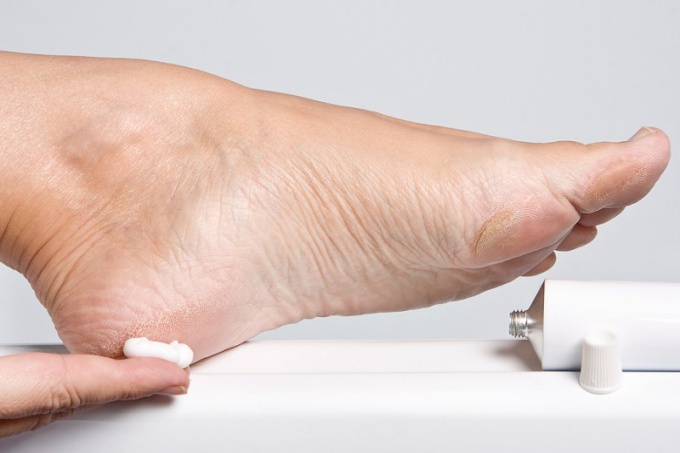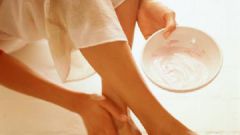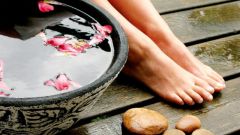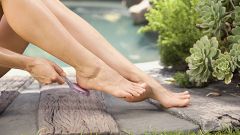You will need
- products containing vitamins A and E
- - vitamins "Aevit"
- - herbs: sage, chamomile,
- - nourishing cream
- - moisturizing body butter
- - gauze
- - raw onion or potato
- - vodka
- - olive or flax oil
- - oatmeal
- - disposable overshoes
Instruction
1
Include in your daily diet plenty of foods containing vitamins A and E. It's the carrots, green onions, milk, beef and chicken liver, cabbage. Drink a course of vitamins "Aevit", if you are pregnant or, take every morning and evening, one capsule of vitamin E, which can be bought in any drugstore without a prescription.
2
Asprivate heel in trays with healing teas, for example, succession, sage, or chamomile. Pharmacy herb brew according to the instructions on the package and keep your feet in hot water until, until it begins to cool. In the process of gently massaging the heel with a pumice stone, circular movements, gently removing the particles of dead skin. After dry your feet dry and apply on problem areas thick nourishing cream or moisturizing body oil.
3
Use folk remedies to treat dry skin on the heels. At night, tie to the feet of cabbage leaves or onions (as an option - raw potatoes), grated on a fine grater and wrapped in gauze. Try also to lubricate scaly areas of honey if not allergic. For Allergy sufferers a good substitute honey can be olive oil. And with the advent of the domestic counters avocado was available and the treatment with the inside of the skins of the fruit.
4
Do during the week compresses, applying to the feet with a piece of gauze, folded in several layers and soaked in vodka with vegetable oil (in the ratio 50: 50). To enhance the effect on the feet, wear cotton socks or disposable plastic bags. Instead of vodka you can use vaseline and even mayonnaise.
5
Try an inexpensive, original and effective recipe: oatmeal. Boil the oatmeal in water, add tablespoon of vegetable oil, preferably olive or flax. Apply the oatmeal on the foot thick layer from top to wear disposable Shoe covers and tightly tie them at the ankle with a drawstring. After two hours, remove Shoe covers, porridge, rinse, and lubricate the foot cream or oil.
6
If home treatments and pharmacy cream does not help, do consult your doctor, Podiatry, specialist in diseases of the feet, or a dermatologist (a specialist in any koronaroliticescoe clinic). Dry skin on the heels, with cracks and blisters can be a symptom of kidney disease, varicose veins, and diseases of the endocrine system, including diabetes.



